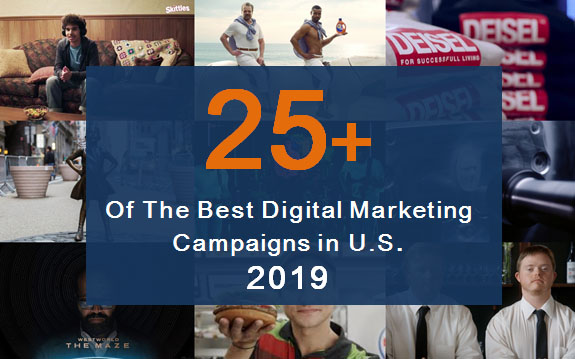How to Rank Highly for Amazon Searches: Quick Tricks for Amazon SEO
E-Commerce & Retail | Mar 28, 2022
For now, the undisputed king of online retail stands atop every other e-commerce platform, leaving everyone else to fight over the scraps left in its shadow.
If you’re doing e-commerce, you’re probably selling on Amazon (or you’re in one of the few niches that haven’t been absorbed into its market-distorting gravitational field).
Today, Amazon is the biggest e-commerce platform out there, and if you’re not using it, you’re missing out. The greatest thing you can do for your sales listings isn’t even related to Amazon at all. There’s more to Amazon than just trying to own the buy box and rank well on their A9 search engine.
It’s all about your ranking on Google.
Sure, it’s great that you have your products listed on Amazon. You’re going to get some hits from Amazon’s search algorithm. But Google still the largest search engine in the world, and it involves an entirely different set of criteria to Amazon’s internal search engine.
If you ranked well on both and you can double up on the benefits. And if you ranked badly on either and you will cut yourself out of a potentially massive revenue stream.
The best practices of how to rank highly on Google has been researched and discussed to death and we suggest these guides published by Search Engine Journal to be your references in case you need any info with this regards:
- SEO 101: Learn the Basics of Search Engine Optimization
- A Complete Guide to Getting Started to SEO
- Illustrated Guide to Link Building
Now, it’s time to learn how to rank highly on Amazon’s search engine results pages. Don’t just read this article —put it into practice, and see how it affects your rank.
What Makes a Product Rank Well on Amazon’s Ranking Algorithm?
Amazon’s A9 search algorithm is very different from the Google algorithm. Amazon’s algorithm takes all of the following direct factors into consideration when determining product ranking for a given product search. These direct factors are:
- Sales Performance History—aka Sales Rank: It’s one of the most important rankings factors that refers to the number of sales compared to other similar products.
- Text Match Relevancy: It encompasses the content of your product listings from titles to backend search terms.
- Price: If your pricing is much higher than your competitors, they might take the cake.
- Availability (in stock history): If you’ve run out of stock, your listing ranking may decrease or disappear. So, you need to be ready all the time and plan accordingly.
Also, there’re some things that Amazon doesn’t necessarily weigh in its search results, but they help to influence the direct factors. They are:
- Fulfillment Method: For example, when you use Fulfillment by Amazon (FBA), Amazon will manage the entire fulfillment process for you—a fact that makes your products automatically eligible for Prime status. This method works well for companies that don’t have the physical space to store inventory, or that aren’t working with an experienced third-party fulfillment provider to manage these responsibilities.
- Reviews: The total number of reviews written for your product as well as its review score.
- Images: Image quantity is not what’s important as much as image size and quality. You can rank better if you have one large, high-quality image than having multiple normal-sized images.
- EBC / A+ Content: It enables brand owners to change the product descriptions so you can describe your product features in a different way (e.g. including a unique brand story, enhanced images, and text placements). If you used it effectively, it can result in higher conversion rates, increased traffic, and boosted sales.
- Advertising & Promotions: Sales velocity is the most important factor monitored by Amazon’s algorithm. But how do you increase your sales velocity? The answer: advertising & promotions. Just a few dollars allocated toward advertising can go a long way toward driving traffic to your listings and increasing your sales.
Quick Tricks to Improve Your Amazon Listing’s Ranking on Google:
- Create a link on another indexed website: The excellent way to get GoogleBot to pay attention to your product page on Amazon is to add a link on another site that’s already indexed on Google. Make sure you’re not duplicate listing and make sure you’re not using an affiliate link, which won’t work the same way. It has to be a clean Amazon link.
- Incorporate long-tail keywords: When you’re writing your product content, do some research on long-tail keywords related to your product. Amazon may not pick up on them, but Google will so that you’ll be in a better position to rank for the niche terms that will point people to your product.
- Keep Your Product’s Title Concise: Use short titles to ensure it completely displays on Google. If you’re incorporating a lot of detail in your product title, the page title could be bigger than you expect. It’s not bad all the time. If you’re trying to work some keywords into the title for your Amazon SEO, it may be worth it.
- Use the Power of Bundles: Creating a package with more than one item allows you to create a completely separate listing, side-stepping a frequent problem with Amazon where a product is oversaturated with listings.
General Tips to Optimize Your Technical SEO for Amazon or Any E-commerce Websites
- Don’t Miss Out on Long-tail Keywords: They may not attract more traffic, but they do have higher conversion rates as they allow you to better understand the consumer intent correctly.
- Use Unique Title & Meta Descriptions for Each Product Page: Try as much as you can to include the relevant long-tail keyword in both the title and the meta description.
- Check the Information Architecture: Make the product easily accessible to visitors. Try to keep important pages no more than three clicks away from the home page. The ideal structure should be: (Homepage > Categories > Subcategories > Products)
- Optimize Images with Alt Text: All images must have an alt text that provides a clear description. Always use descriptive alt text because customers, not just bots, will read the same information in case the image fails to load.
- Create Unique Product Page Content: Avoid creating duplicate content by mistake. Use canonicalization to avoid such issues. In case you have a large number of product pages, focus on creating unique content for the ones that generate a lot of traffic.
Final Thoughts
Amazon has become necessary for many brands today, and learning how to optimize and tame it for your products is a make-it-or-break-it deal. Try to focus on every single detail as if you were the consumer. By spending the time to accurately support your listings with a few optimizations, I’m sure you’ll be able to successfully compete for all multiple levels.





